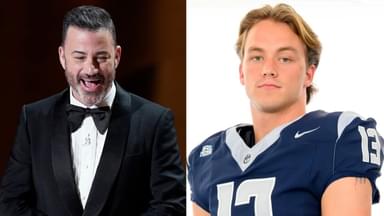Recently, the world of college football and NIL was turned upside down when a federal judge approved the landmark House vs. NCAA settlement. It’s a moment that redefines what it means to be a college athlete in America.
Advertisement
For the first time, schools can directly pay their athletes, ending decades of amateurism and clearing the way for student-athletes to potentially earn millions. Their income will come from a mix of name, image, and likeness (NIL) and revenue sharing.
Sportico’s senior legal analyst, Michael McCann, appeared on Yahoo Finance’s YouTube channel alongside Joe Pompliano to break down the landmark judgment. McCann called it a “game changer” before elaborating on the two major components of the settlement.
“Athletes who played over the last eight years — Division I athletes — will be paid [over 10 years] about $2.8 billion,” said McCann. Or, as the analyst put it, this is retroactive compensation for players who couldn’t legally profit off their NIL through things like video games or TV deals.
Most of that backpay will go to football and men’s basketball players from Power Five schools. But the bigger shift is what lies ahead.
Starting July 1, schools can opt in for a new revenue-sharing model that allows them to pay players up to $20.5 million per year, directly from the athletic department’s income. That includes money from massive media rights deals, ticket sales, and bowl games.
This is a historic change, and one that turns the NCAA’s decades-long model of “no pay for play” upside down. The Sportico analyst acknowledged this as well.
“This is totally new,” McCann emphasized. “All the years of amateurism — that’s gone. Colleges and those in the Power conferences will do it; others probably will not.”
That said, these changes don’t mean that the NIL deals have disappeared. In fact, athletes can now land endorsements, local business partnerships, and promotional gigs. But they’ll also be able to receive a full scholarship and share in university profits.
The catch, however, is that every NIL deal over $600 will now be reviewed by a neutral body to ensure it reflects fair market value. This will add legitimacy and accountability to what has become a booming $100 million-plus industry. Or as McCann aptly said: “You now can get NIL deals, plus a full ride, plus a share of revenue.”
There are ripple effects, though. As McCann noted, roster limits will now replace scholarship caps. For example, football rosters will drop from 120 to 105, cutting spots for walk-ons.
Title IX lawsuits are also likely, especially if schools funnel most of their revenue to men’s programs. There’s also pressure on smaller schools to fund these payments, with options like raising student fees or restructuring departments potentially on the table.
And most importantly, a financial ecosystem like this could make staying in school more appealing than turning pro early. That’s something we’re already seeing as players take the legal route to remain eligible under the new system.
Despite the pros and cons, the reality is that the shift is happening. Especially with the NCAA’s power dipping down to unprecedented territory, thanks to the newly formed College Sports Commission. The Commission is backed by Power 5 schools, which will now enforce rules and spending caps.
So, in layman’s terms, what’s set to happen is not a reform, it is a revolution. And for college athletes, it’s about time.







